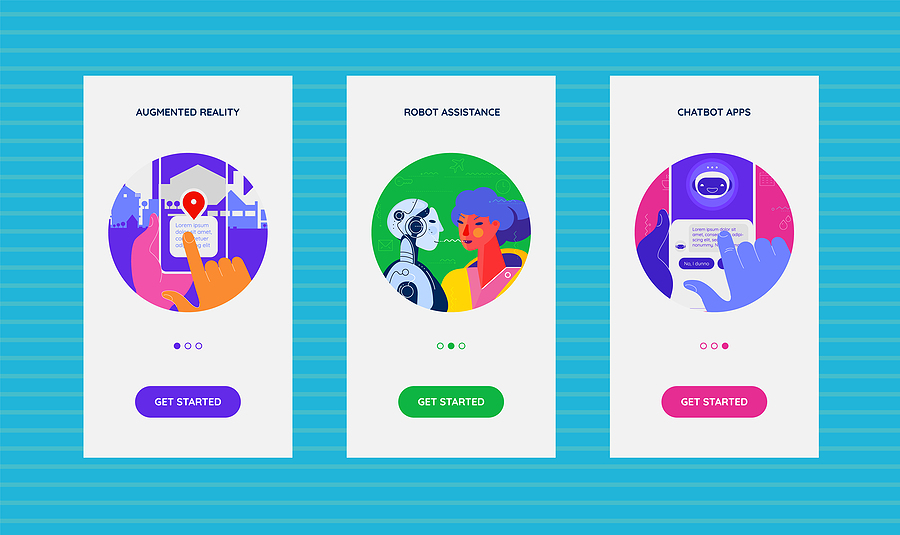
Five on Friday: Customer Acquisition, Retention and Revenue Share
While America was busy watching (or ignoring) the Republic and Democratic National Conventions, we’ve been hard at work on Subscription Show 2020 – which is about five weeks out! We’ve also been working on Five on Friday. This week, we’re featuring news publishers who are pushing for the same deal Apple offered to Amazon, five factors to consider when designing a subscription model, and a discussion on the future of gaming subscriptions. Also, we consider whether our focus should be on customer acquisition or retention, and the huge increase in digital sales and rentals during the second quarter.
News Publishers Want the Same Revenue Share Deal Apple Gives Amazon
News publishers including The New York Times, The Washington Post and The Wall Street Journal want the same revenue share deal Apple gives Amazon for hosting the Prime Video app in the App Store, reports Media Post. The publishers have turned to Digital Content Next (DCN), a trade group representing online publishers, to get it. Currently, publishers who have apps hosted in the App Store pay a 30% commission to Apple on first-year subscription sales. After the first year, that percentage drops to 15%.

In DCN’s August 20 letter to Apple CEO Tim Cook, DCN CEO Jason Kint asked Cook to share more information about the “conditions” these publishers must meet to garner the same deal Amazon is getting. Kint is referring to the July 29 hearing where Cook and other tech CEOS appeared before the House Judiciary Committee to discuss possible antitrust concerns. During that meeting, Rep. Hank Johnson asked for additional information on those conditions.
In his virtual testimony, Cook no one gets special treatment, reported The Motley Fool.
“We treat every developer the same. We have open and transparent rules, it’s a rigorous process. Because we care so deeply about privacy and security and quality, we do look at every app before it goes on. But those rules apply evenly to everyone,” Cook said.
In response to the Committee’s inquiry, a November 1, 2016 memo from Apple’s Eddy Cue to Amazon’s Jeff Bezos was produced that outlined that Amazon pays a 15% revenue share to Apple for customers who sign up for Prime Video through the App Store. There is no revenue share for customers who download the app, but already subscribe to Prime Video. If Prime Video upsells premium streaming services via the App Store, Apple also gets 15%. During the July 29 hearing, Cook said the arrangement is available to any app developers who meet certain conditions, but he did not specify what those conditions are.
Kint wrote, “Nearly all of DCN’s members offer apps in the Apple App Store and, as noted above, many offer subscription-based access to a wide variety of content. The terms of Apple’s unique marketplace greatly impact the ability to continue to invest in high-quality, trusted news and entertainment particularly in competition with other larger firms. In keeping with your statement to the Committee, I ask that you clearly define the conditions that Amazon satisfied for its arrangement so that DCN’s member companies meeting those conditions can be offered the same agreement.”
There has been longstanding concern and discontent among app developers, including Spotify and Epic Games, about Apple’s 30% “Apple tax.” With additional concerns raised by the House Judiciary Committee, it appears things are coming to a head, but it doesn’t seem likely that Apple will voluntarily make changes unless forced to do so.
Five Factors to Consider When Designing a Subscription Model for Your Company
The subscription model has been popular for many years, but it is even more popular in the midst of the pandemic. We can listen to music or audiobooks, watch our favorite streaming videos, unbox this month’s beauty box, and even order pet food via auto-ship. During this unprecedented time, subscription companies are seeing significant growth.
But what if your company is not yet using the subscription model to generate recurring revenue? You’re in luck. This is a great time to test the waters. Whether you are a B2B or a B2C company, there are many things to consider, as Nupura Ughade points out in “How to Choose a Subscription Business Model for Your Company” for the Learning Hub. Here are five factors to think about when designing your subscription or membership model.
- Target audience: Who is your ideal audience? Many companies have a primary target audience and secondary audiences, each with their own marketing strategy and mix.
- Pricing: Identify your breakeven point, and experiment with different pricing options. Newspapers with paywalls experiment with pricing, including discounts and special promotions often, to see what works and what doesn’t. You also want to identify what pricing model you want to use. For example, flat rate pricing is one price for everyone. Subscription boxes with one offering use flat rate pricing. Tiered pricing works for services like Netflix who have three different offerings and three different prices.
- Simple checkout process: Have you ever been on a website, ready to make a purchase and you abandoned your shopping cart because there are too many steps to sign in or pay? You can avoid that by designing a simple checkout process. Consider whether someone has to create an account, can check out as a guest or can sign up via popular existing IDs like Facebook or Google. This process also includes multiple payment methods – debit/credit, Apple Pay, PayPal, etc. Give as many options as you reasonably can accommodate.
- Personalize the experience for your customer: Customer data and shopping behavior can help new subscription companies create a customized experience for their customer, so customers feel special. Many subscription services do a good job of this by making recommendations based on past viewing or shopping behavior. For example, if you watch true crime shows on Prime Video, the service is likely to make recommendations based on that viewing behavior.
- Ongoing customer relationship: Keeping your customers happy throughout their subscription journey is critical to retaining them for the long haul and for maximizing the customer’s lifetime value. You can do this by fostering relationships with your customers, including a positive onboarding experience, monthly check-ins to describe how new features work, offering loyalty rewards, referral bonuses and other perks.
We have only touched the surface here. For a more thorough discussion, read Ughade’s original article at the Learning Hub online.

How the Gaming Subscription Market Is Playing Out
So many gaming services – PlayStation, EA Play, Apple Arcade, Xbox Game Pass, Nintendo Switch, Google Stadia – offer gaming subscriptions these days. For a flat monthly fee, players get access to a new selection of games along with added perks, but players are still buying physical and digital copies of their favorite games. In an article for Screen Rant earlier this week, Austin King asked the question, “Are Subscription Services Really the Future of Gaming?”
The answer for this, and almost every other question, is “it depends.” For players who are content with exclusive mobile games you can only play via Apple Arcade or Google Stadia, the answer is probably yes. For those who want a more personalized experience with your favorite gaming console, maybe not.
The gaming services definitely have their benefits. A PlayStation Now subscription, for example, gets a subscriber access to hundreds of PS4, PS3 and PS2 games to download or stream for $9.99 a month, $24.99 for three months or $59.99 for 12 months. Subscribers also get access to new games each month, access to exclusive features and discounts. The question is whether or not these subscriptions suit everyone’s needs.
In his article, King said that subscriptions like PS Now are considered more of a bonus, but they won’t replace owning the games. He compared it to having streaming video on demand subscriptions like Netflix. There are cord cutters who will never go back to linear TV, but there are still a lot of TV viewers who have cable and see their subscription streaming services as a supplement. King said that new games may attract new subscribers, but it is often older games that helps retain those subscribers.
“While some subscription services have been more successful than others, none of them have drastically altered the way people play video games. Yet,” King said.
In an article for Wired in June 2019, Brian Barrett said that subscriptions could actually swallow gaming, but the gaming subscription industry is still fairly new and the companies are seeking market share. They are also testing price, features and game titles while studying the data they get from users on what is being played, by whom and how often. It seems to be an industry that is gaining ground, but no one has found a solid success formula that is plug and play. The industry will eventually figure it out, and gamers will let brands like Xbox, PlayStation and Nintendo know if they’ve gotten it right with their subscription dollars.

Customer Acquisition vs. Customer Retention: Which Is More Important?
Customers are the lifeblood of any subscription or membership business. To be successful, customer acquisition and customer retention are critical areas of focus. But which is more important? Jenna Ott explored this question for Business2Community in her August 21 article, “Customer Acquisition vs. Customer Retention: What Should You Focus On?” The short answer is both, but how and when to spend time on these activities is a far more complex answer.
Customer acquisition seems to be the logical place to start, since your subscription business cannot grow without subscribers. Crafting a smart growth strategy involves a variety of factors, including the resources (e.g., time, money, people, marketing tools and tactics) a company needs to support new subscribers. The strategy should also be scalable and adaptable. The customer acquisition strategy a new company starts with may require adjustments along the way.
Customer retention is also critical to the success of any subscription business. You must keep the customers you attract. Ott says that acquiring a new customer costs five times more than retaining a current customer. If your jaw hasn’t dropped yet from that statistic, look at this one. Increasing customer retention by just 5% can increase a company’s profits between 25% to 95%! That’s a good argument for focusing on customer retention.
ProfitWell has a similar take on acquisition versus retention. A lot of companies focus their attention on customer acquisition. That is certainly important, but acquisition and retention are necessary for a subscription company’s growth. Acquisition helps companies to grow their customer base and customer lifetime value, but if you can’t hang onto your customers, that lifetime value plummets and so does your recurring revenue.
The bottom line is that both customer acquisition and customer retention are important activities and both deserve time, effort and attention. What works for each organization is likely to be a little bit different, but neither of the activities should be done in a vacuum. Design a customer acquisition strategy that will bring your company new business, while at the same time having a solid plan in place to keep those subscribers for long-term sustainability.

DEG Report: Spending on Digital Sales and Rentals Skyrocketed 54% in Q2
Due to the pandemic, bored consumers have been eager for fresh, new content to occupy their time at home. Digital entertainment sales and rentals bear that theory out. During the second quarter of 2020, digital entertainment sales skyrocketed 54%, according to The Digital Entertainment Group (DEG). The data excludes subscription streaming video on demand and ad-supported video on demand services. Here are highlights from DEG’s report:
- In the first half of the year, consumers spent $2.99 billion on digital transactional entertainment. This is one-third more than the $2.25 billion spent in the first half of 2019.
- In the second quarter of 2020, the digital sale of movies, series and other filmed content was up 57%, compared to 33% in the first half of the year.
- Transactional streaming, where consumers rent a movie or show for 24-48 hours, was up 50% in the second quarter, compared to 33% in the first half of the year.
- DVD and Blu-ray sales dropped 17% in the first half of the year to $1.27 billion. In the second quarter, they dropped 11%.
- Total sales, including physical and digital, increased 19% in the second quarter and 4.9% in the first half.
- Total rentals were up 15% in the second quarter and 9% in the first half of the year.
For more highlights from DEG’s report, read Thomas K. Arnold’s article on Media Play News, “DEG: Consumer Spending on Digital Sales, Rentals Rose 54% in Q2.”)








